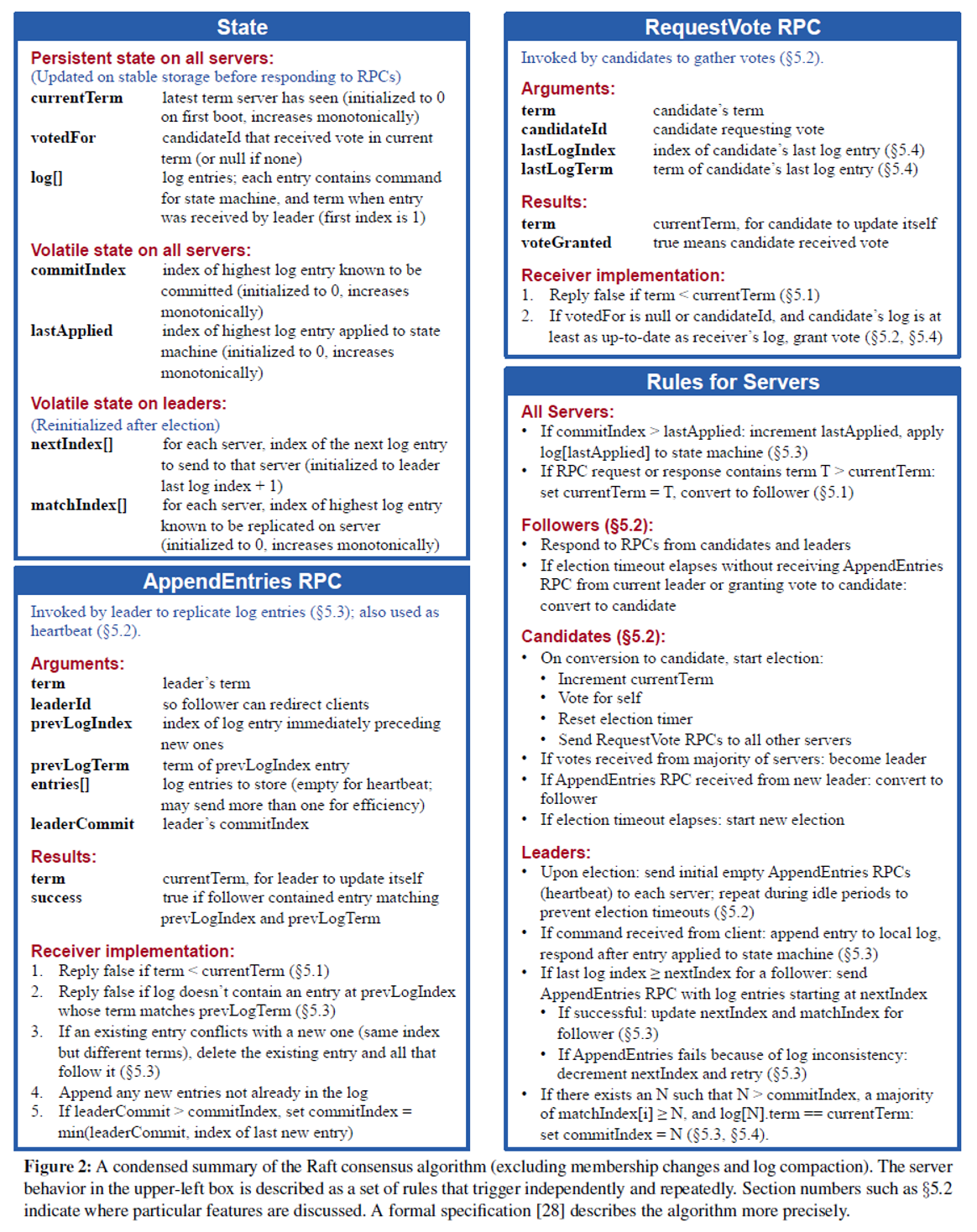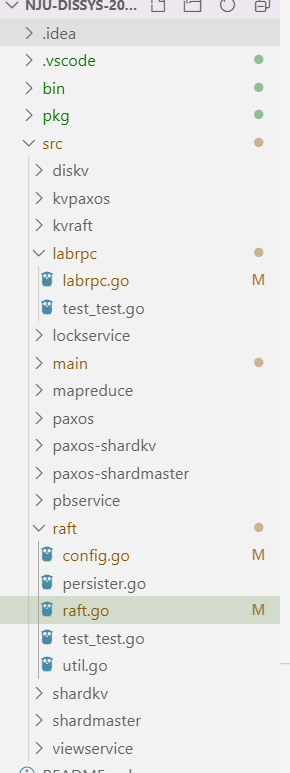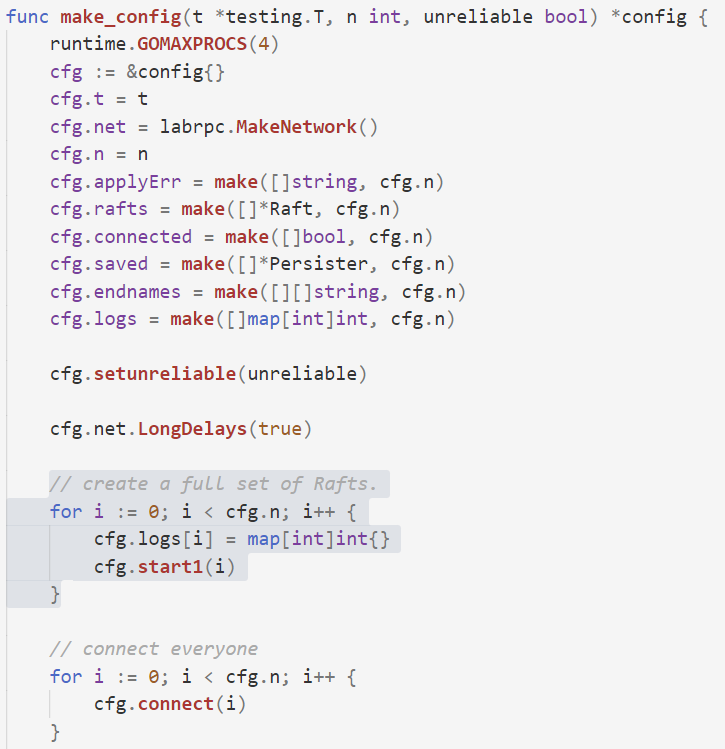接上一个对于Raft的分析,这是文章的链接地址:https://blog.csdn.net/karry_zzj/article/details/102943617
我们这一文章主要分析一下我们的作业的代码。
作业主要就是在一个框架下实现相关算法。
论文中提供了一张简要的raft算法总结图(论文figure 2),可以作为我们代码实现的指导。
从这张图我们可以具体分析一下有如下几个主要内容:
- State:即服务器的状态
- RequestVote RPC:投票请求的RPC
- AppendEntries RPC:附加日志的RPC
- Rules for Servers:服务器的规则
等会我们具体来分析。
项目结构
首先我们来看一下这个作业项目的结构:
其中我们主要用到如下文件:
- labrpc 文件夹下的
labrpc.go,test_test.go - raft 文件夹下的
config.go、raft.go
我们首先打开test_test.go 文件,我们可以发现有如下函数,而此函数就是整个项目测试leader election的入口处。
func TestInitialElection(t *testing.T) {
servers := 3
cfg := make_config(t, servers, false)
defer cfg.cleanup()
fmt.Printf("Test: initial election ...\n")
// is a leader elected?
cfg.checkOneLeader()
// does the leader+term stay the same there is no failure?
term1 := cfg.checkTerms()
time.Sleep(2 * RaftElectionTimeout)
term2 := cfg.checkTerms()
if term1 != term2 {
fmt.Printf("warning: term changed even though there were no failures")
}
fmt.Printf(" ... Passed\n")
}
我们看到有这一行代码:
cfg := make_config(t, servers, false)
当我们点进去make_config这个函数,其实就进入到了 config.go 这个文件中。
其中有三行是创建 Rafts :
// create a full set of Rafts.
for i := 0; i < cfg.n; i++ {
cfg.logs[i] = map[int]int{
}
cfg.start1(i)
}
我们再点进去 start1 这个函数,发现有这样的一行:
rf := Make(ends, i, cfg.saved[i], applyCh)
而这个Make函数就是在 raft.go 文件中写的,所以我们这样便知道了整个项目的一个运行流程:



